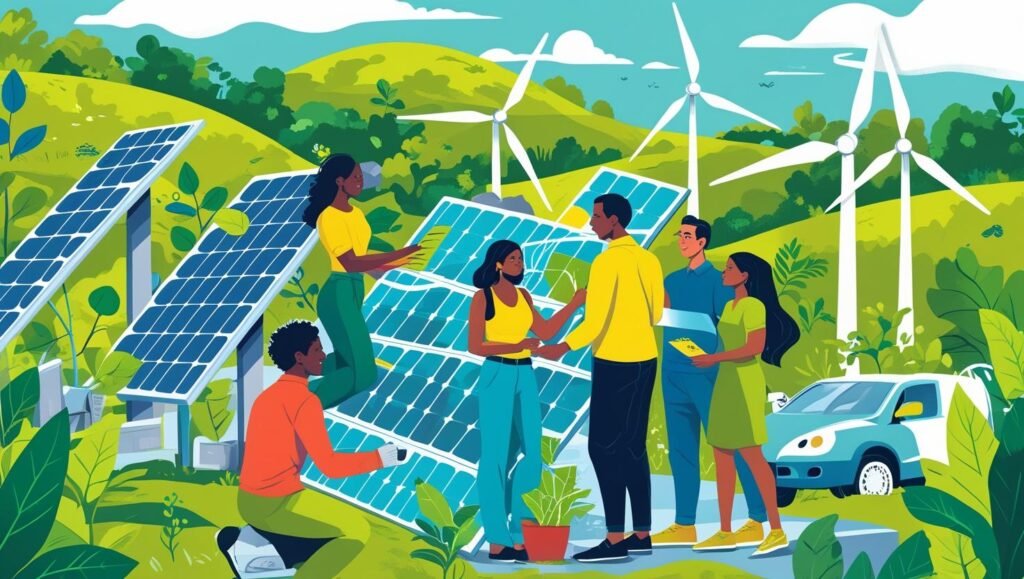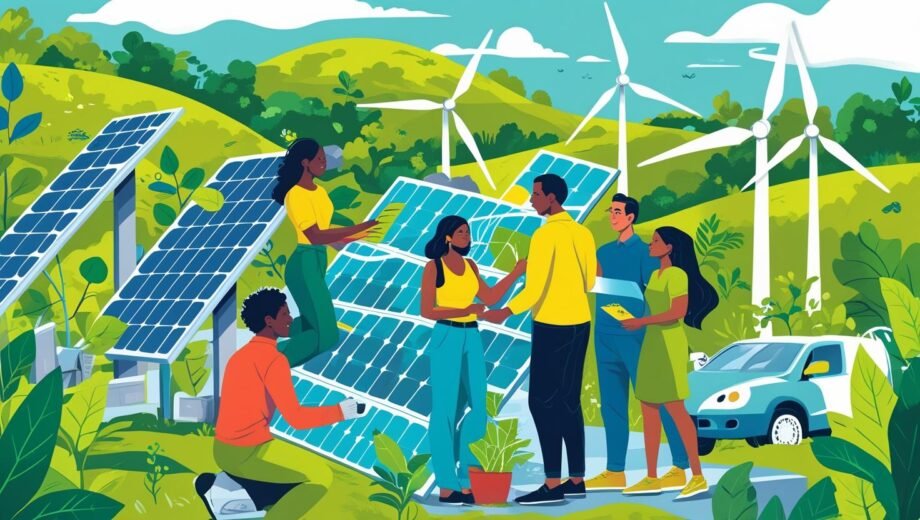The global push for sustainability has never been more urgent. As we face the escalating impacts of climate change, a wave of green technologies is emerging, not just as alternatives, but as fundamental solutions poised to revolutionize every aspect of our lives. These leading green technologies revolutionizing the world are driving us towards a renewable, sustainable, and efficient energy future. For those seeking to buy leading green tech or simply explore leading green technologies, understanding these innovations is paramount.
The Pillars of Green Technologies: Renewable Energy
At the heart of the revolution are advancements in renewable energy. While solar and wind are well-established, their continuous evolution and integration capabilities are what make them truly transformative:
- Advanced Solar Power: Beyond traditional rooftop panels, innovations like perovskite solar cells promise higher efficiencies at lower production costs. We're also seeing the rise of bifacial panels (generating energy from both sides) and floating solar farms on water bodies. The ability to integrate solar into building materials, such as solar roof tiles and solar windows, is making it an omnipresent source of clean energy.
- Next-Generation Wind Power: Wind turbines are becoming larger and more efficient, particularly in offshore environments. Floating wind farms are opening up vast new areas for energy generation in deeper waters, harnessing stronger, more consistent winds. Concepts like airborne wind energy technologies, using tethered drones or kites, are exploring capturing wind at higher altitudes.
- Green Hydrogen: This isn't just a concept; it's a rapidly developing reality. Produced by using renewable energy to split water molecules, green hydrogen offers a clean alternative for hard-to-electrify sectors like heavy industry (steel, cement), shipping, and aviation. It also serves as a crucial long-duration energy storage solution. (Source: gb&d magazine, “12 Sustainable Innovations Transforming the World”)
- Enhanced Geothermal Systems (EGS): Moving beyond traditional geothermal plants, EGS aims to tap into deeper, hotter rock formations, potentially unlocking a vast, constant source of renewable energy globally, independent of specific geological hotspots.

Sustainable Infrastructure & Resource Management
Beyond direct energy generation, other leading green technologies revolutionizing the world focus on making our systems and resources more sustainable:
- Advanced Energy Storage Solutions: The intermittency of renewable energy necessitates robust storage. Beyond lithium-ion, breakthroughs in solid-state batteries, flow batteries, and even gravity-based energy storage systems are ensuring renewable power is available 24/7. These innovations are critical for grid stability and reliability.
- Smart Grids and AI for Energy Management: Intelligent grids use Artificial Intelligence (AI) and Machine Learning (ML) to optimize energy distribution, manage demand-response, integrate diverse renewable sources, and reduce waste. AI also plays a pivotal role in predicting energy needs and optimizing the performance of renewable assets.
- Carbon Capture, Utilization, and Storage (CCUS): This technology captures carbon dioxide emissions from industrial processes or directly from the atmosphere, preventing it from entering the atmosphere. The captured carbon can then be stored permanently underground or even converted into useful products. Companies like Climeworks are at the forefront of direct air capture. (Source: TIME, “World's Top GreenTech Companies of 2025”)
- Green Building Technologies: The construction sector is undergoing a massive transformation with sustainable materials (e.g., low-carbon concrete, mass timber, bio-concrete), energy-efficient designs, smart automation, and the integration of renewable energy directly into building elements. (Source: gb&d magazine, “12 Sustainable Innovations Transforming the World”)
- Circular Economy Models & Advanced Recycling: Moving away from a linear “take-make-dispose” model, the circular economy emphasizes reuse, repair, and recycling of materials to minimize waste and resource consumption. Advanced recycling technologies are making it possible to recover more valuable materials from waste streams, including plastics and electronics.

The Impact of Tesla Green Technology and US Renewable Energy Growth
Companies like Tesla are prime examples of how integrated green technology can drive market disruption. Tesla green technology extends beyond electric vehicles (EVs) to include comprehensive energy solutions like Solar Roofs, Powerwall home batteries, and Megapack utility-scale storage. Their focus on battery technology advancements, vertical integration, and circular economy principles (like battery recycling) has significantly accelerated the adoption of sustainable solutions. (Source: AdviceScout, “Tesla Energy : Elon Musk's Green Energy Initiative”)
The US renewable energy sector is experiencing robust growth, driven by policy incentives, falling costs, and increasing corporate and consumer demand. The U.S. Department of Energy (DOE) is heavily invested in advancing solar, wind, geothermal, and water power technologies, as well as modernizing the power grid. (Source: Energy.gov, “Renewable Energy Pillar”) This push from both industry leaders and government initiatives highlights the widespread adoption of green technologies.
How to Explore Leading Green Technologies and Get Involved
To explore leading green technologies and even buy leading green tech, consider these avenues:
- Research Key Players: Companies listed by organizations like TIME Magazine for their green tech innovations (e.g., BETA for mobility, Climeworks for carbon capture, Fervo Energy for renewable energy) are excellent places to start. (Source: TIME, “World's Top GreenTech Companies of 2025”)
- Follow Industry News: Keep abreast of green tech news and reports from reputable energy and environmental organizations.
- Invest in Green Funds: Consider exchange-traded funds (ETFs) or mutual funds that focus on renewable energy, clean tech, or sustainable infrastructure.
- Adopt Sustainable Practices Personally: From installing rooftop solar to purchasing an EV or supporting businesses committed to sustainable manufacturing, individual actions contribute to the broader impact of green technologies.
The array of leading green technologies revolutionizing the world is constantly expanding. By understanding and embracing these innovations, we can collectively build a more sustainable, renewable, and thriving future.
Want to Explore More?
Read our latest piece: Green Technologies of the Future: Which Developments Will Save the World?.
Comment below: What’s your take on the environmental cost of green tech?
Tag us on social media using #GreenTechRealityCheck
nature.com+7thenevadaindependent.com+7lithiumharvest.com+7
Have questions or thoughts? Comment below and let us know what more you’d like to learn about green technology—we’d love to hear from you!







